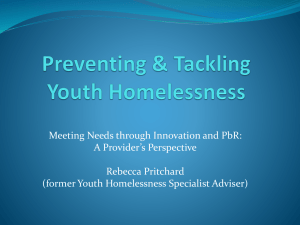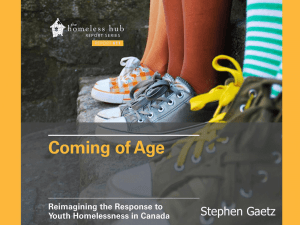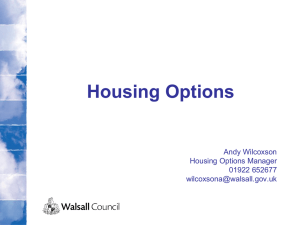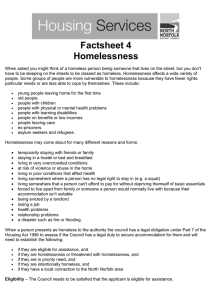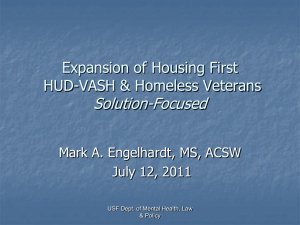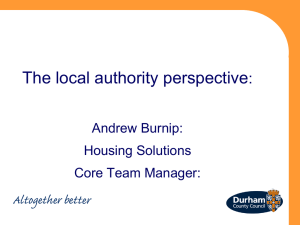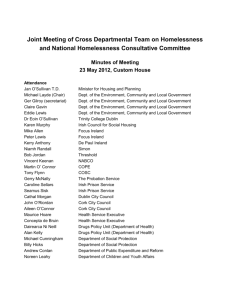PowerPoint FYM - The Salvation Army
advertisement
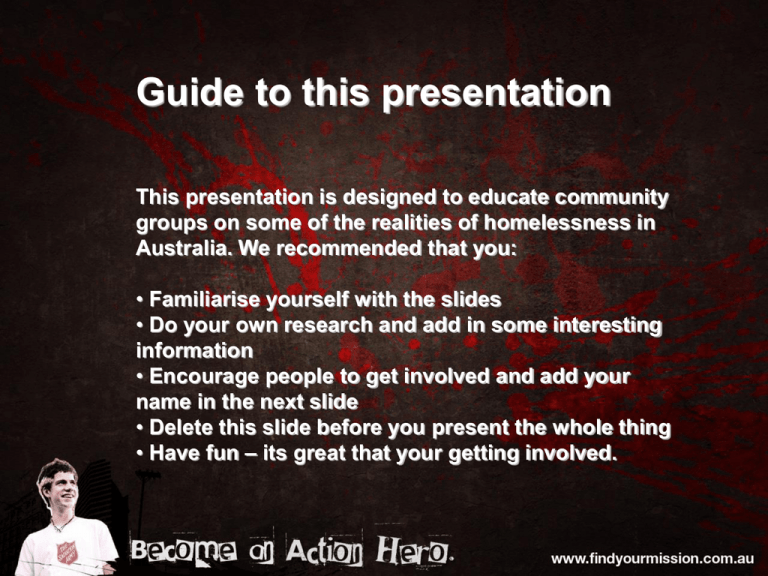
Guide to this presentation This presentation is designed to educate community groups on some of the realities of homelessness in Australia. We recommended that you: • Familiarise yourself with the slides • Do your own research and add in some interesting information • Encourage people to get involved and add your name in the next slide • Delete this slide before you present the whole thing • Have fun – its great that your getting involved. Homelessness in Australia Presenter Author Name What is Homelessness? Homelessness is more than just about having a roof over your head. It’s also about the separation from families and communities. Its about the lack of access to social and economic tools and opportunities that are so vital to the foundations of adult life. Homelessness in Australia According to the last Australian Bureau of Statistics’ census report (2001 – 2006): • A total of 104, 606 Australians are considered to be homeless. • One third or about 32 000 are homeless young people between the ages of 12-25. • The number of homeless teenagers (12-18) has doubled to almost 22 000 in the last 20 years. Types of Homelessness There are a variety of ways that people can be homeless they are: • Sleeping Rough’ – people who are living on the streets, sleeping in parks, squatting in derelict buildings or using cars or trains as shelter. •‘Couch Surfing’ – people temporarily staying with friends, relatives, family or even strangers until they outstay their welcome and move on. Types of Homelessness continued… • Crisis Accommodation – people who stay in hostels, refuges or boarding houses for short periods of time and move across crisis accommodation services. • Medium to Long Term Homelessness – people living in support accommodation which does not have a lease or ‘self contained’ facilities such as a kitchen. TOP REASONS PEOPLE BECOME HOMELESS: •Relationship/ family breakdown with parents, siblings and extended family • Domestic violence/ child abuse • Drug and alcohol abuse • Mental health issues • Financial difficulty or unemployment • Eviction/ Accommodation ended • Being kicked out or feeling unwanted IMPACT OF HOMELESSNESS ON PEOPLE: • Poor health and little access to medical treatment • Low self esteem and increased anxiety • Behavioural issues and mental illness • May become involved in criminal or illegal activity to survive • No work experience or job training • No support network – no social, recreational or cultural ties • Developing addictions to survive Facts about Homelessness • Homeless assistance services in Australia cannot meet the demand for accommodation; One in two homeless young people are turned away from emergency accommodation each night. • Youth homelessness is largely invisible – only 16% of homeless young people will be sleeping rough. The data tells us that most homeless young people are ‘couch surfing’ and living in other unstable situations. Facts about Homelessness •Studies estimate that the number of homeless people experiencing mental illness is 44% compared with 19% of the general population. • Studies estimate that 42% of homeless adults had some experience of state care and protection programs when they were young. What can you do? Everyone can do something to assist with this problem. Here are a few suggestions. • Provide support to local homeless services • Raise awareness on the issue • Write to local community leaders and encourage them to take up the issue • Further educate yourself to understand the issue •…. •….. The information on these slides was provided by The Salvation Army OASIS and the ABS.

